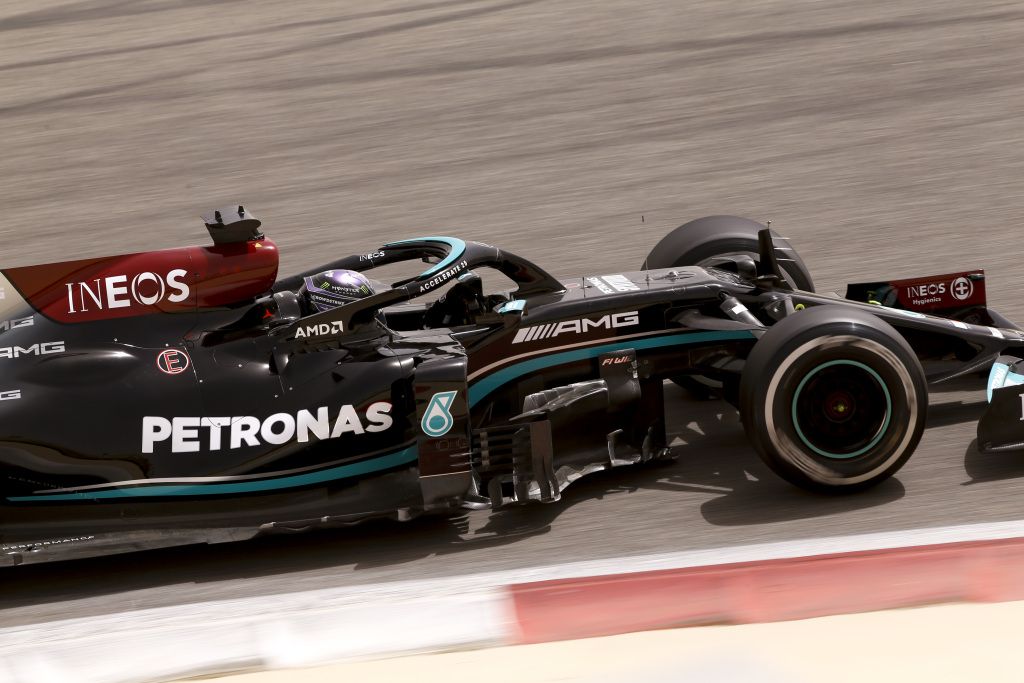James Allison credits the HPP personnel for redesigning Mercedes F1 power unit, as he addresses the ‘bulge’ and also W12 changes.
Apart from a new floor design, the other most visible change that can be spotted on Mercedes, is the ‘bulge’ on their engine cover. Among all the four F1 teams using the German engine, it can only be seen on the factory outfit and Aston Martin.
Both McLaren and Williams have been able to hide it to a certain extent. The power unit is all-new for Mercedes, as Allison credited the HPP personnel, while addressing the bulge. It is related to the new design and the desire to squeeze a lot more horsepower.
“In the middle of the car here, the Power Unit, I said that was all new and it is, every little bit of it is new,” said Allison, in a new video from Mercedes. “And it’s probably most obvious to an external observer in that big bulge that you see there.
“There has been a big investment by our friends at HPP, our teammates at HPP, to redesign the plenum, the intake system of the engine, retune the engine around that and squeeze a lot more horsepower out of the Power Unit as a consequence.
“But they had to do that in a very interesting regulatory environment where they only get one shot at it. In previous years they were allowed three goes, you had a phase 1 PU, a phase 2 and a phase 3 each brought at different parts of the season with the Power Unit getting stronger through the year.
“In this year’s rules they get one go and they have to make sure they get all of that goodness into the Power Unit right from the start of the year,” summed up Allison, as he then moved onto the W12 itself, which has some new bits as well.
The idea from F1 was to reduce the downforce, but the clever engineers have managed to bring in performance still, as seen in the Bahrain testing and also talked about by Pirelli chief Mario Isola. Allison noted the same as the idea is not to keep the performance at the level of 2019, which was or is to happen with the 2021 regulations.
“Talking about the W12, I can tell that the survival cell where the driver sits, that’s the same piece,” started Allison. “The transmission at the back, the fuel system, the hydraulic system, many, many, many of the components on the car are simply cut and paste from last year to this.
“And not only are they cut and paste in a design sense, the actual physical parts, this survival cell is the very thing that raced last year on our 2020 design, hence no 2020 car behind me, because those 2020 cars have actually been transformed into these 2021 cars.
“Now, although there are lots of bits of the 2020 car in this design, that doesn’t mean in any way it is the same car. Sure, the architecture, the underlying structure is the same, but many of the things that make it a performance car have changed and that’s because the sport also decided to keep the things that tend to distinguish cars from one another in performance terms, keep those on the table.
“So, all of the aerodynamic package, that’s new. All of the engine, that’s new. The cooling system beneath the skin here, that’s new as well. These are the sort of things that make the main differences between the cars and so although we have had the good fortune of being able in this difficult year, where our work has been so affected by COVID, to be able big lumps of the car forward from one year to the next, we still have the main challenge of designing a fast car all over again, completely fresh and new,” summed up Allison.
Adding on the performance levels not to remain at 2019 levels, Allison added: “Of course, we don’t want to leave the performance at 2019 levels. The regulators didn’t expect them to stay at 2019 levels, they expected us to do our job which is to scrabble our way back forwards by working in the wind tunnel and trying to find that performance back again onto the car.
“And we had a very exciting time in the wind tunnel doing just that, finding new ways to make sure that even with the floor chopped and hacked by regulation we were able to put a car down on the track that has high performance.”
Here’s Andrew Shovlin on test shortages for Mercedes
Here’s lap count from Bahrain F1 Test

